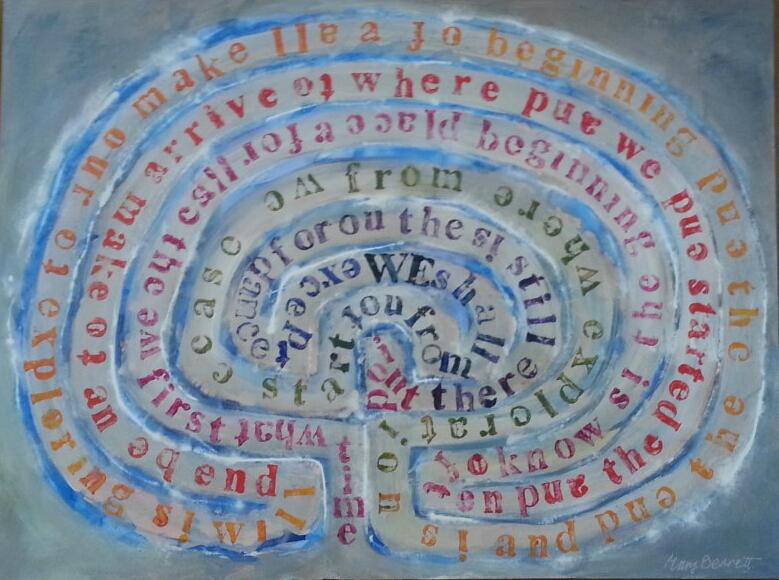 Still Point – T.S. Eliot Poetry for your walk 30 ” x 40″
Still Point – T.S. Eliot Poetry for your walk 30 ” x 40″
I often indulge in word play in my art work. The challenge is to incorporate the words not as a sign or slogan like a poster but to use them as part of the aesthetic appeal and to intrigue people.

If you trace the labyrinth path (always only one path in and the same path out) reading every second word, you’ll come up with a famous and favorite T.S. Eliot quotation.
What we call a beginning is often the end
And to make an end is to make a beginning.
The end is where we start from.
We shall not cease from exploration
And the end of all our exploring
Will be to arrive where we started
And know the place for the first time.
The piece is mixed-media, mainly acrylic paint with some pumice gel and I used large rubber stamp letters.
The words are in the rainbow colours, in the order in which you walk them. Red is the third circle in, but the first one you walk for instance.
To read more of text from Little Gidding, Four Quartets, here’s a link.
http://www.westminster.edu/staff/brennie/wisdoms/eliot2.htm
Click the “Labyrinths” page at the top to see more of my work with labyrinths.
I might have to do a new piece using this dancing quotation.
At the still point of the turning world. … there the dance is,
…Neither movement from nor towards,
Neither ascent nor decline. Except for the point, the still point,
There would be no dance, and there is only the dance.